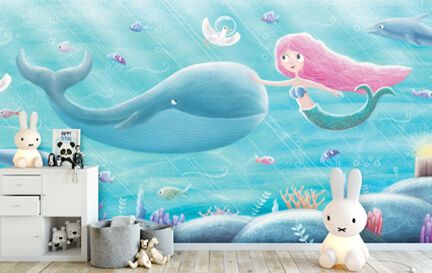When the street less taken, decorating has turned out to be progressively basic for everyone. In any case, in case you’re new to the universe of wallpapers, you’re presumably pondering: What’s the most ideal approach to move through the apparently unlimited choices to best express your distinction? Also, when you have the ideal comes close by, where would it be advisable for you to go from that point?
The high quality wallpapers for wall covering you pick can influence a space to seem greater, hotter, and more brilliant (or the other way around), and even conceal defective components.
- Submit a General direction forColour can set the mind-set in a room. To influence a space to seem bigger and the roof higher, pick designs with cool-shading foundations, for example, green, blue, or violet. Delicate cool hues recommend serenity, while extreme cool hues are crisp and emotional. Warm hues – reds, yellows, and oranges – satisfy their name and really make individuals feel hotter. These are a prominent decision in colder atmospheres and furthermore function admirably in north-bound rooms. The more extreme the shading, the greater fervour it will provide for a room.
- Play with Light In a north-bound room, dim corridor, or austere space, search for wallpapers that will reflect light around the room, for example, designs with light hues and those with metallic or luminous inks. Additionally, think about examples with smooth surfaces, which reflect most extreme light. Dull hues assimilate light, influencing dividers to seem nearer and the room littler. Finished surfaces additionally will in general make a divider look darker.
- Conceal Flaws with Texture Patterns with a genuine or saw surface can stow away or cover divider blemishes or design blemishes. Examples with real material surfaces incorporate grass and string material, burlap, foil, extended vinyl, and even texture. Different papers recreate the vibe of marble, wood, calfskin, texture, even creature skins. An example with a layered plan additionally makes an impression of surface, (for example, a monochromatic damask structure behind a botanical example). You can explore bvg.co.in siteto buy beautiful high-quality wallpapers.
Think about how the room is utilized, and how regularly, while picking backdrop designs.
- Pick a Suitable Style For a formal look, pick substantial scale designs with sensational hues. For a fun, splendid style, pick little themes that are open and normally dispersed, for example, polka specks. Remember the ornamental effect of fringes. Accessible in a wide range of themes and styles – from games scenes to peaceful perspectives to natural life pictures – fringes rapidly set up the topic of a room.
- Complement the Positive Stripes and other vertical examples, which underscore tallness, propose respect, imperativeness, and custom. Vertical examples, including florals where the theme’s shape recommends a V or a U, will influence a roof to seem higher. Level examples complement width, propose quietness and rest, and influence tight rooms to seem more extensive.
- Scale for Success Small-scale designs make a vibe of openness, while extensive scale plans make rooms increasingly cozy. To make a vacant room look progressively outfitted, pick extensive scale designs with brilliant hues and dim foundations. To give level dividers the appearance of profundity, attempt a vast, open dimensional example, for example, a trellis plan.
- Blend and Match Wisely A room without example, can exhaust, while a stay with an excessive number of examples can cause eagerness. When blending stripes, florals, or plaids in a room or between adjoining territories, pick designs that recurrent a similar shading or estimations of that shading.
Pursue these means to decide what number of moves of wallpapers you’ll require.
- Compute the wall space to be canvassed in square feet. Measure a divider from roof to floor and on a level plane from corner to corner. Duplicate those two figures. Rehash for residual dividers. Include the aggregates.
- In case you’re covering a roof, figure the area by increasing the width of the floor by the length.
Separation each figure by 25 – the normal area in a standard single move of backdrop.
- Subtract from the complete one-half single move for every window and entryway. The subsequent figure is the last number of single rolls required. Continuously round parts of the following most elevated entire number. On the off chance that your backdrop comes in twofold rolls (most private backdrops do), partition this figure by 2.
Deciding How Much Wallpaper to Purchase
- Measure all dividers and duplicate the width by the stature of each divider in feet.
- Add all estimations to yield the all-out area.
- Deduct for windows, entryways, and other expansive openings.
- Check the move mark for how many square foot inclusions the move gives and guarantee the move inclusion is more than the absolute divider area.
The general principle guideline is to arrange one move additional than what you need. It is ideal to get it in the meantime, as the first buy to guarantee the rolls are from a similar item run so there is no variety in shading. A shopper can guarantee this by taking a gander at the clump number. In the event that the cluster numbers are the equivalent, at that point there will be no variance in shading. The extra roll is to represent a balanced match and mix-ups. You can generally return unused rolls on the off chance that they go unused.
Twofold roll and single roll are industry terms; it is simpler for the client to decide how much backdrop is required by taking a gander at the square foot inclusion the move gives.


